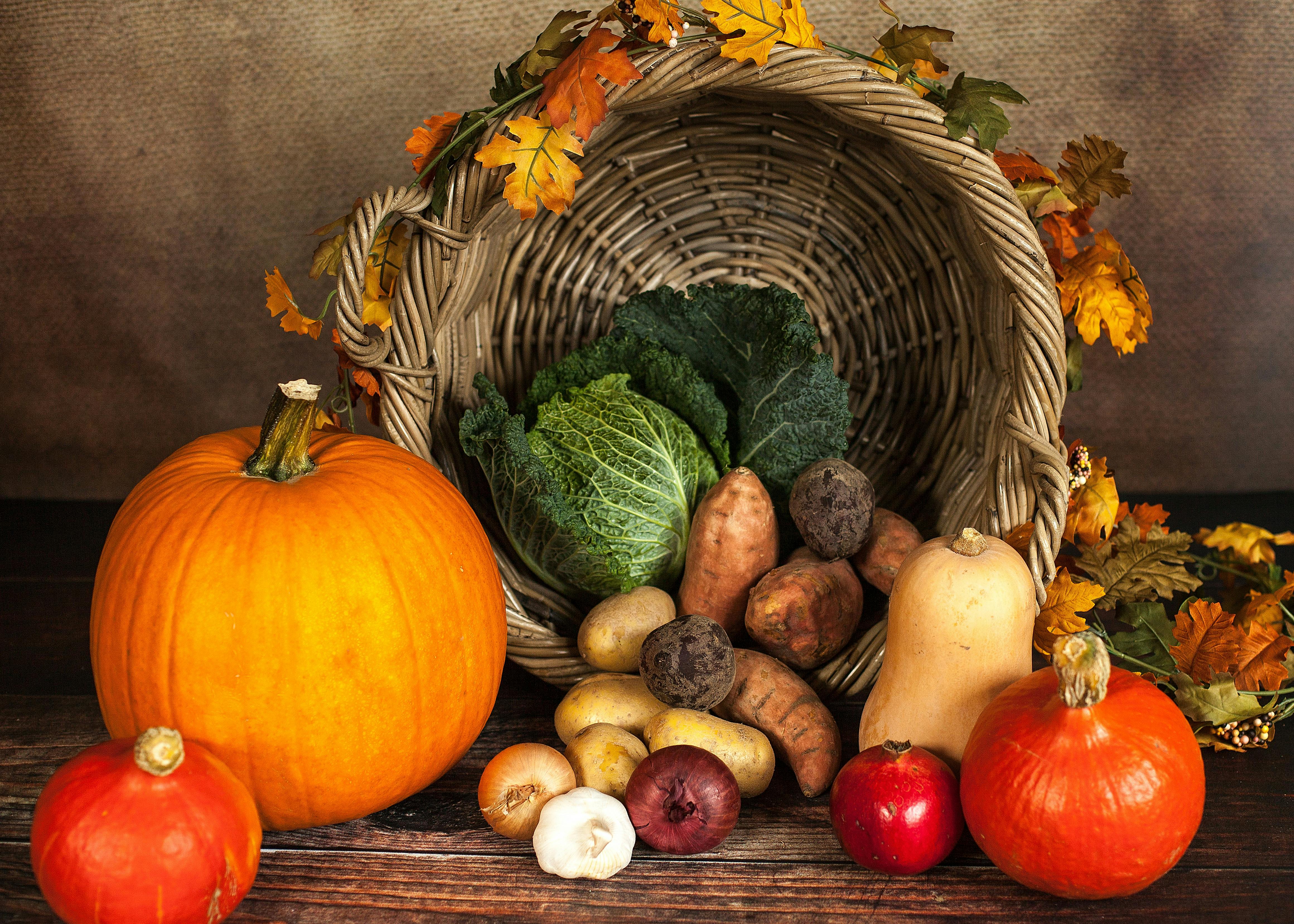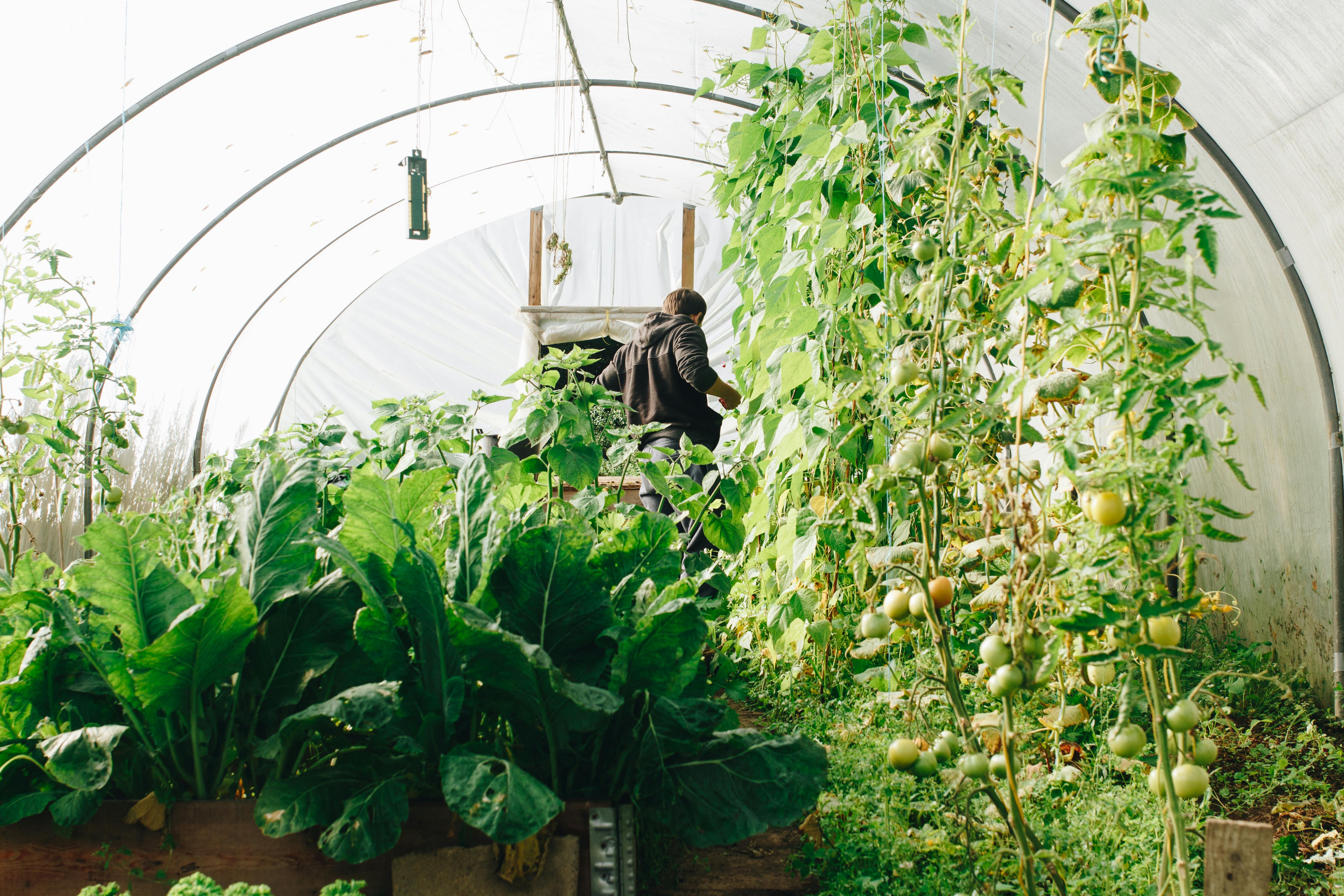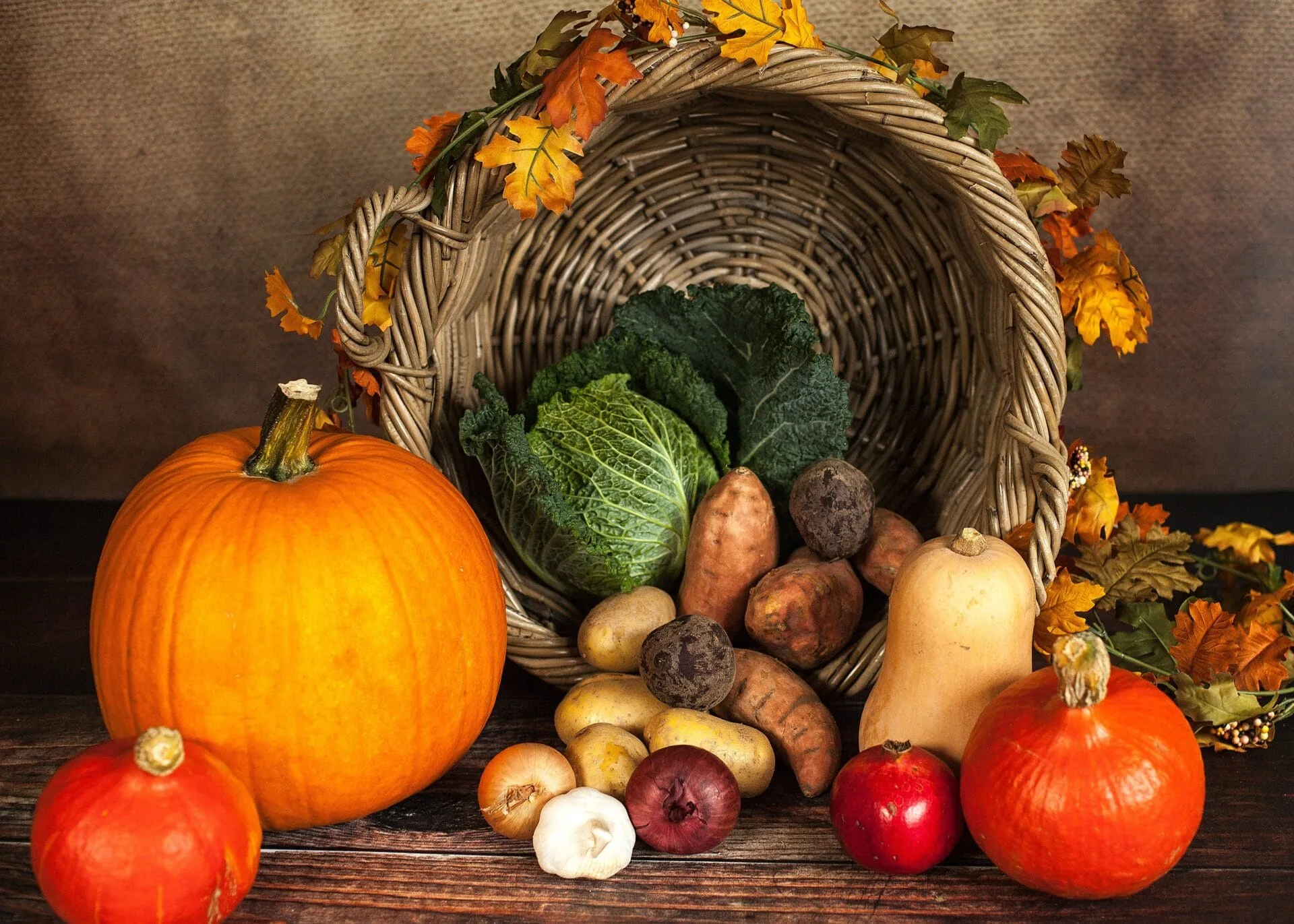The rainforest is home to a wide variety of fruits that can be found all around the world. These fruits are part of the flora and fauna that make up the rainforest ecosystem, and many of them are incredibly nutritious and full of flavor. From exotic fruits like acai to more familiar fruits like bananas, there are plenty of delicious and nutritious options available in the rainforest. In this article, we will explore some of the most common fruits found in rainforests and discuss their nutritional benefits.The types of fruits found in the rainforest vary greatly and include some of the most exotic and delicious varieties in the world. Some common rainforest fruits include bananas, pineapples, papayas, avocados, mangos, guavas, passion fruits, acai berries, jackfruits, lychees, starfruits, tamarinds and plantains. There are also many different types of exotic rainforest fruits such as cupuacu, uxi amarelo and maracuja. These fruits provide a wide variety of flavors and textures for those who live in or visit rainforest regions.
Where to Find Fruits in the Rainforest
The rainforest is home to an incredibly diverse range of plants and animals, including some of the world’s most delicious fruits. From the tropical flavors of mangoes and papayas to the intensely sweet taste of pineapples, there are a variety of fruits to be found in the rainforest. If you’re looking for a special treat, there are plenty of unique fruits to be found in these lush ecosystems. Here’s how you can find them.
One way to locate fruits in the rainforest is by looking for fruiting trees or vines. Many tropical fruit trees and vines produce edible fruit throughout the year, making them easy to spot when they’re ripe and ready for harvesting. Look for trees with bright-colored flowers or clusters of small green berries to find tropical fruits such as bananas, guavas, mangos, papayas, and more. If you’re lucky enough to stumble upon a wild vine producing passionfruit or starfruit, you’ll be in for a real treat.
Another way to locate fruit-bearing trees and plants in the rainforest is by keeping an eye out for local wildlife that feeds on these plants. Many species of birds, monkeys, and other animals rely on tropical fruits as part of their diet. You can often spot these animals from afar if you know what you’re looking for! Keep an eye out for brightly colored birds such as toucans or macaws that may be feasting on a nearby tree.
Foraging is also an option if you don’t want to rely on luck or chance when searching for edible fruits. Experienced foragers know which plants are safe to eat and which should be avoided at all costs. Before harvesting any wild fruit, make sure it has been identified by an experienced guide who knows what is safe and what isn’t! With careful research and guidance, it’s possible to find delicious treats hidden deep within the rainforest.
Whether you choose to look for fruiting trees or ask local wildlife where they get their treats from, there’s no denying that the rainforest is full of delicious fruits waiting just around every corner! From mangos and pineapples to wild passionfruit vines, there are plenty of tropical delights waiting for those who know where to look. So next time you’re planning a trip into the rainforest – make sure you bring your appetite!
The Benefits of Eating Fruits from the Rainforest
Fruits from the rainforest are packed with essential vitamins, minerals, and other nutrients that can provide many health benefits. Eating these fruits can help boost your immune system, improve digestion, and even fight off cancer. They are also a great source of antioxidants, which help protect your cells from damage caused by free radicals. Furthermore, rainforest fruits provide numerous other benefits such as improved cardiovascular health and better mental clarity.
Rainforest fruits are high in fiber which helps to regulate your digestive system and can help you maintain a healthy weight. The fiber also helps to lower cholesterol levels which is beneficial for reducing the risk of heart disease. Additionally, many of these fruits have anti-inflammatory properties that can reduce inflammation in the body and help keep you healthy.
Rainforest fruits are also rich in vitamins and minerals that can help support optimal health. Vitamin C is found in abundance in many of these fruits which makes them great for boosting immunity. They are also rich in potassium which helps to regulate blood pressure levels and can be beneficial for those suffering from hypertension or heart disease. Additionally, many of these fruits contain beta-carotene which is an antioxidant that helps protect cells from damage caused by free radicals.
Lastly, eating rainforest fruits can provide a range of mental benefits as well. Many of these fruits contain tryptophan which is an amino acid that helps promote relaxation and reduce stress levels. Additionally, the consumption of these foods has been linked to improved cognitive function due to their high antioxidant content. All in all, eating rainforest fruits can provide numerous health benefits that make them an excellent addition to any diet!
Choose the Appropriate Season
When it comes to collecting rainforest fruits, the most important tip is to choose the right season. Rainforest fruits usually ripen during particular times of the year, so it’s important to know when and where to find them. While some fruits may be found all year round, others may only be available for a few weeks or even days. To find out when a particular fruit is ripe, you can ask local people who may be familiar with the area’s seasonal cycles.
Be Aware of Local Regulations
It’s also essential to familiarize yourself with any local regulations that may affect fruit picking in the rainforest. In many areas, there are laws that prevent people from harvesting certain types of fruit, or that limit how much they can take. Before going out foraging, make sure you understand what’s allowed and what isn’t so that you don’t accidentally break any laws.
Dress Appropriately
When collecting rainforest fruits, it’s important to wear clothing that is appropriate for the environment. Lightweight and breathable materials are best as they will keep you cool and comfortable while you search for ripe fruit. Long sleeves and pants can also help protect against insects and other hazards in the rainforest. Additionally, it can be helpful to wear a hat or other head covering to shield your face from the sun.
Bring Supplies
You should also bring along some supplies when collecting rainforest fruits. A bag or basket can help make transporting your finds easier, as can a knife for cutting down branches or vines containing ripe fruit. A water bottle is also essential for staying hydrated while in the rainforest heat. Finally, it’s a good idea to bring along a first aid kit in case of any injuries or illnesses.
Go With Others
Finally, if possible it is best to go out collecting rainforest fruits with others rather than alone. Not only will this make it more enjoyable but it can also help ensure safety in case of any unexpected situations such as getting lost or encountering dangerous animals or plants.
Tropical Fruits that Grow in the Rainforest
The rainforest is home to a variety of plants and animals, including a wide range of tropical fruits. These fruits are not only delicious, but also full of vitamins and minerals. Many of these fruits are native to the rainforest, while others have been introduced from other regions. Here is a list of some of the most popular tropical fruits that grow in the rainforest.
The first fruit on our list is the banana. Bananas are an excellent source of potassium and vitamin B6, as well as fiber and carbohydrates. They are also high in antioxidants, which can help protect against free radical damage and aging. Bananas can be eaten raw or cooked, and they make an excellent addition to smoothies or desserts.
Next up is the pineapple. This sweet and tangy fruit is rich in vitamins C and B1, as well as manganese, copper, and dietary fiber. Pineapples can be eaten fresh or used in juices or other recipes. They can also be used to make jams and jellies or added to salads for a refreshing flavor boost.
Another popular tropical fruit found in the rainforest is the mango. Mangoes are high in vitamins A and C, as well as dietary fiber and potassium. They have a sweet flavor that makes them perfect for adding to smoothies or using as a topping for ice cream or yogurt. Mangoes can also be used in savory dishes such as curries or stir-fries for a unique flavor twist.
Finally, papayas are another common tropical fruit found in the rainforest. Papayas are high in vitamin C and low in calories, making them an ideal snack for those watching their weight. Papayas can be eaten fresh or made into sauces or jams for added sweetness to dishes like oatmeal or yogurt parfaits.
These are just a few of the many tropical fruits that grow in the rainforest. If you’re looking for something new to add to your diet, why not give some of these delicious fruits a try? You’ll be sure to enjoy their unique flavors while also getting all sorts of health benefits!

Exotic Fruits Found in the Rainforest
The rainforest is home to some of the most exotic and delicious fruits in the world. From passion fruit to guava, these unique fruits offer a range of flavors and textures that are unlike anything else. While some of these fruits are native to only certain regions, others can be found in the rainforest all around the world. Here are some of the most popular exotic fruits found in the rainforest:
Passion Fruit
Passion fruit is a juicy, tart fruit that has its origin in South America. It can be eaten raw or used as a topping for desserts, salads, and other dishes. The flavor of passion fruit is intensely sweet and acidic, making it an interesting addition to any meal.
Guava
Guava is a tropical fruit that is native to parts of Central America and South America. It has a sweet flavor with hints of citrus and a creamy texture when ripe. Guava is often eaten raw or made into sauces and jams for desserts and snacks.
Mangosteen
Mangosteen is an exotic fruit native to Southeast Asia that has an intensely sweet flavor with hints of sourness. Its firm yet soft texture makes it perfect for eating raw or using in various recipes such as smoothies and desserts.
Dragon Fruit
Dragon fruit is a visually stunning tropical fruit that originates from Central America and Mexico. It has a sweet taste with hints of citrus and melon, making it perfect for adding sweetness to salads or smoothies. Its distinctive exterior makes it great for creating beautiful decorations on dishes like cakes or pastries.
These are just some of the exotic fruits found in the rainforest, but there are many more unique varieties out there waiting to be discovered!
Popular Fruits Grown in the Rainforest
The rainforest is known for its lush and vibrant vegetation, and fruits are an important part of its biodiversity. Many types of tropical fruit have a unique flavor and texture that make them popular around the world. Here are some of the most popular fruits grown in the rainforest:
Bananas are one of the most widely-consumed fruits in the world, and they are also one of the most abundant fruits in the rainforest. Bananas are usually sweet and creamy when ripe, with a slightly tart flavor. They can be eaten raw or cooked into desserts and other dishes.
Papayas are another popular rainforest fruit that is full of vitamins and minerals. The flesh is juicy and sweet with a slightly tart undertone. Papayas can be eaten raw or used in salads, smoothies, salsas, jams, or cakes.
Mangoes are a tropical favorite that comes in a variety of shapes, sizes, colors, and flavors. Mangoes can be yellow-orange to deep red in color when ripe, with a sweet flavor that has hints of citrus or pineapple. They can be enjoyed raw or cooked into curries, cakes, or jams.
Avocados are another popular fruit from the rainforest that is high in healthy fats and vitamins. Avocados have a creamy texture with a mild nutty flavor that makes them perfect for use in guacamole or salads.
Pineapples are yet another delicious tropical fruit that grows abundantly in the rainforest. Pineapples have an unmistakable sweet-tart flavor that makes them perfect for use in desserts or drinks like smoothies or cocktails.
These are just some of the most popular fruits grown in the rainforest. There are many more types to explore if you’re looking to add some tropical flair to your diet!
How to Store Rainforest Fruits
Storing rainforest fruits can be tricky, but with the right knowledge and techniques it can be done successfully. The key to storing any fruit is to find the best place and environment in which to store them. Rainforest fruits are no different, and there are several ways you can store them so they stay fresh for longer.
The first step is to choose the right container for your rainforest fruits. Plastic containers are ideal as they provide an airtight seal, keeping the fruits fresher for longer. Make sure the container is clean and free of any debris before adding the fruit. If using a cloth bag, ensure it is dry and clean before adding the fruit.
The next step is to keep the rainforest fruits away from direct sunlight or heat sources such as radiators or vents. Heat will cause the fruits to ripen too quickly, rendering them useless. Additionally, keep them away from other food items that may attract pests such as flour or sugar.
When storing rainforest fruits in a refrigerator, make sure they are placed on a shelf that is away from raw meats or any other food items that could cause contamination. Additionally, use an airtight container if possible and place it on its side so that there is no contact between the fruit and any cold air in the refrigerator.
Finally, it’s important to inspect your stored rainforest fruits regularly for signs of spoilage or decay. Discard any fruit that has become discolored or moldy as this indicates it has gone bad and should not be consumed. With these tips in mind, you’ll be able to store your rainforest fruits properly so they stay fresh for longer!

Conclusion
The rainforest is a unique and complex environment that provides an array of fruits for humans to consume. Through conservation efforts, we can preserve the rainforest and its resources for future generations to enjoy. There is an abundance of diverse fruits that can be found in the rainforest, ranging from tropical staples like bananas and pineapples to exotic delights like achiote and jaboticaba. In addition, many of these fruits provide dietary benefits such as vitamins, minerals, fiber, and antioxidants. By understanding the types of fruit that grow in the rainforest, we can better appreciate and protect this valuable ecosystem.
The rainforest is a precious resource that must be safeguarded from destruction. By consuming fruit from the rainforest and supporting conservation efforts, we can ensure that future generations will continue to benefit from this vibrant environment. We owe it to ourselves and future generations to preserve the rainforest so that its vast array of delicious fruit will remain available for us all to enjoy.



